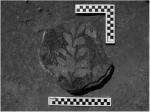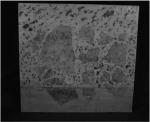Summary (English)
Archaeological works performed during this campaign has focused on finishing the washing, inventory and registration of material retrieved during the 2005 campaign. The discovery of three constructive phases in the villa has been possible thanks to this work. The first phase corresponds to the foundations of the villa and dates around the 1st and 2nd centuries BC, which has been proved by ceramic fragments findings of Campanian A1; particularly, a border of Lamboglia 31B form, Campanian B, with pieces of Morel 2765 form or Lamboglia 1 and Campanian C, with another border of Lamboglia 5. All of them found in the sondages performed under the paving of several rooms and foundation boxes of walls SUs 36 and 76, dating from the second half of the 2nd century BC until the common era.
The second phase, coinciding with the flourishing of the villa, belongs to the 1st and 2nd centuries AD and corresponds to the paving and subdivisions made on most of the rooms facing north. In fact, in some of the opus signinum paving’s rudus, fragments of sigillata africana A of Hayes 9 A form and fragments of sigillata gallica of Dragendorff 27 or 24-25 form were found. Similar remains joined to ‘thin walls’ and some fragments of italic sigillata also appeared in some of the walls enclosing the spaces where these floors were. Therefore, it could be considered that enlargement and renovation of the villa started during the reign of Augustus and ended in the second half of the 2nd century AD.
The third phase provides the date of abandonment of the building, and this coincides with a residual occupation for the extraction of constructive materials in order to be reused. In these levels, most material is African (kitchen) ceramics with different shapes such as Ostia III 332, Hayes 181, Ostia I 270, Hayes 23 B or Hayes 197. According to the chronology of these materials, the abandonment of the villa cannot be completely precised but they are believed to date from the late 2nd century and beginning of the 3rd century, then turning into a makeshift quarry until later this century or the beginning of the 4th century.
The decorative repertoire of the villa roughly corresponds to this period, divided into two different areas. In the rooms orientated to the south, the discovery was plastered walls with simple motifs consisting of white panels with a 10 cm thick red border that indicates the closeness to the ceiling and the plinth. However, other panels are red, orange or blue and seem to be arranged in rectangles of different sizes. Fragments of panels mimicking speckled marble were also found. All these findings prove that the plastered walls are from the First Pompeian Style.
In room G, decoration turns to a more complex style with vegetal motifs over dark backgrounds in which also details in red —belonging to the third Pompeian style— were found. Dark backgrounds mean we are before a tablinum inside the winter rooms of pars urbana. However, the iconography of the wall paintings does not make it possible to date them accurately. Several periods in the decoration of the rooms have been distinguished due to some walls preserving up to six layers of plaster with two panels painted in different periods.
Thus, it seems that between the end of the 1st century BC and the common era several rooms were decorated and, depending on their purpose and placement inside the house, a simpler and sober style from the first Pompeian style was applied to them. Later, from the end of the 1st century and beginning of the 2nd century AD, some rooms were redecorated with more imaginative designs from the third style, which was the last style to be used in the villa.
(translation by Virginia González Martín & Sara María Cabrera Martín)
- Alfredo Porrúa Martínez
Director
- Alfredo Porrúa Martínez
- Antonio Sánchez López
- Elvira Navarro Santa-Cruz
Team
- Museo Arqueológico y Etnográfico Municipal del Ayuntamiento de San Pedro del Pinatar






![Download [PDF]](/excavation/skins/fasti/images/results/download_sml.png)

